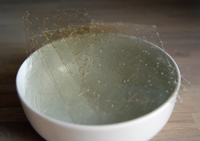
Photo from wikipedia
Adjusting sunlight and thermal radiation from windows is important in efficient energy-saving applications. A high solar modulation (ΔTsol) capability as well as a high luminous transmittance (Tlum) are the ultimate… Click to show full abstract
Adjusting sunlight and thermal radiation from windows is important in efficient energy-saving applications. A high solar modulation (ΔTsol) capability as well as a high luminous transmittance (Tlum) are the ultimate aim of smart windows. In this study, hydroxypropyl cellulose (HPC), W-doped VO2, and poly-N-iso-propylacrylamide (PNIPAm) composite hydrogel films were produced. The sample was prepared between two glasses to constitute a smart window with a sandwich construction structure, which exhibits a high Tlum of 87.16%, a ΔTsol of 65.71%, and a lower critical solution temperature (LCST) of 29 °C. The practical applications of conventional PNIPAm hydrogels are limited by the volume contraction of phase transition. Here, this challenge is addressed by the simple method of combining with HPC. The PNIPAm-2.5 wt % HPC hydrogels possess thermo-responsive contractility with a volume shrinkage rate of 8.5%. Even after 100 high- and low-temperature cyclic durability tests, the smart windows still exhibit a high solar modulation capability.
Journal Title: ACS applied materials & interfaces
Year Published: 2023
Link to full text (if available)
Share on Social Media: Sign Up to like & get
recommendations!